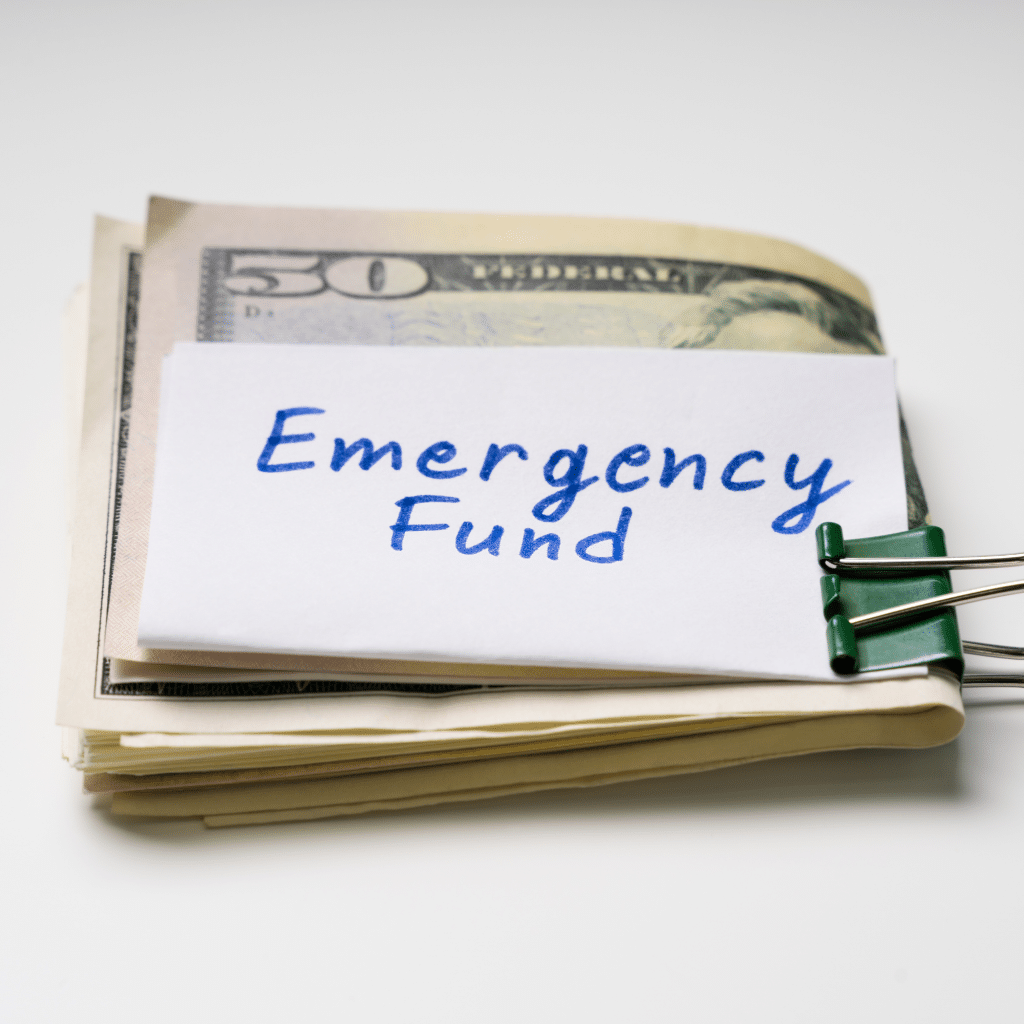How to Make a Budget You Can Actually Stick To

You need a budget. It’s just that simple! And I know you know you need one – otherwise, you wouldn’t be here reading this article. But let’s face it… Budgets suck.
Even though they suck, every person, every relationship, every household – even kids! – should have a budget. And, really, I could end this article right now with a simple “just do it because it works” message.
But it isn’t that easy, is it?
Because I bet you don’t have a budget. And if you do, I bet you’re not sticking to it. Because making a budget that actually works is hard.
Budgets are like diets
I’m the “money nerd” in my family and I love making budgets. I’ve made a million budgets over the years! Planning how to spend my money on paper is always more fun than doing it in real life.
Saying “I want to save money this month so I won’t’ go out to eat” is easy to say. Though after a long day at work, followed by picking up the kids and running errands, I’m exhausted and the drive-thru looks pretty good in that moment.
And BAM – just like that, I blew my budget.
That’s why the most successful budgets – just like diets – are the ones you can stick to.
If you know you’re going to hit the drive-thru on Wednesday because it’s a late night, you have to plan for it.
If you fail to plan, you plan to fail
~ General
Sitting down with my husband and reviewing our budget is the key to our success. If he wants a new video game, it goes in the budget. If I want to splurge on a pedicure, that goes in the budget, too.
By making a realistic plan for how we’re going to spend our money, we make a budget we can actually stick to and hit our financial goals.
And that feels pretty good.
But how do you do that, exactly?
Before you run, you gotta walk
Setting up a budget for the first time takes a little bit of preparation and planning.
First, if you’re married or in a relationship, you must get your partner on board. Your budget will never work if both of you aren’t working on it. In every relationship, one of you is usually more excited about this than the other – figure out which one of you is the “money nerd” and – if it’s you – it’s your job to do the research and make a plan. But you don’t have the final say! Your partner must agree – it’s what I call the “policy of joint agreement.”
Before you jump head first into your budget, you gotta slow down and first decide how you’ll manage your budget and track your spending.
There are tons of available options – web-based, mobile apps, spreadsheets, custom software – and you need to think about what method will work best for you.
Free Monthly Budget Printable
Even though there are tons of options available to track your spending and keep tabs on where it’s going, don’t let that overwhelm you.
I’ve tried programs and apps and the thing I’ve learned is that it’s best to keep it simple.
Some other methods I’ve tried and can recommend to you are:
- Pen and paper – nothing fancy here. Budgets don’t have to be complicated and using a regular notepad to track your income and expenses is an old tried-and-true method.
- EveryDollar is Dave Ramsey’s budget program. It’s web-based and they have an app for your mobile phone, too. It’s simple to set up but if you want to take full advantage of the features, it comes at a cost. We used it for a year and it really worked well for us!
- Mint is another great program for budgeting that comes with web-based access as well as a mobile app. And this one is free to use! It tracks your budget, your bills, and helps you keep tabs on your credit score.
If you want more options, a simple Google search for “monthly budget app” will give you an endless number of choices.
But don’t spend too much time trying to find the “perfect” budgeting program – just use what you have and you can modify it as you go. Remember: it doesn’t really matter how you track your spending and set up your budget, all that matters is that you do it!
How should I spend my money
This is an age-old question: how should I be spending my money? Do other people spend as much on food as I do? What about travel? How much do others save for vacation?
The easy answer here is to spend your money however it works best for you. But there are a few simple guidelines you can follow to help you get started.
The 50/20/30 method
A lot of people like the 50/20/30 rule for setting up their spending.
What this means is 50% of your income is allocated to fixed costs – those necessities that you can’t change every month like your mortgage/rent payment, basic utilities, and groceries.
Then 20% is set aside for financial goals that will help to secure your financial future. The first three financial goals to work toward are:
- Pay down debt
- Save for retirement
- Build your emergency fund
The final 30% is for everything else. It’s this portion of your income that pays for dining out, hobbies, shopping, going to the movies, and gas for your car.
If you prefer to follow the 50/20/30 method, don’t get too hung up on the numbers. When I first started, our debt was astronomical and 20% of our income didn’t cover it. To solve this, we spent closer to 30 and 40% of our take-home pay on financial goals and lowered our flexible spending to 10 or 20% to help cover the high cost of debt we carried.
What does Dave Ramsey say?
If you’ve been following personal finance or budgeting for any amount of time – even if you’re a beginner – it’s likely you’ve heard of Dave Ramsey. I don’t agree with every piece of advice he gives, but his percentages are helpful for establishing a starting point.
Here’s where Dave Ramsey says your money should be going:
- Giving 10-15%
- Saving 10-15%
- Housing 25-35%
- Utilities 5-10%
- Food 10-15%
- Transporation 10-15%
- Health 5-10%
- Insurance 10-25%
- Personal 10-15%
- Recreation 10-15%
Whatever method you pick, always start with the necessities: your house/rent payment, groceries, utilities, and clothing.
Don’t get too excited about clothing being one of the first things you cover in your budget – this means basic clothing. It doesn’t give you permission to go out and buy a new wardrobe (or even a new outfit!). It just means if you don’t have socks or pants or if your kids are growing faster than you can keep up with, make sure you have clothing covered.
From there you can add on debt payments, entertainment and other extras like dining out and new clothes.
4 easy steps to set up your budget
Setting up your budget is easy. Just follow these four steps:
- Write down your income – find your old paycheck stubs or look at your bank statements for the direct deposit records from your employer (or other sources of income)
- List your expenses – if you’re not sure, spend some time reviewing your expenses by looking through your receipts and bank statements to get a starting point for setting up your budget. Doing this first will help you get a realistic budget you can actually stick to right from the start.
- Subtract your expenses from your income – this is a very important step. If you’re spending more than you make, you have to make some immediate adjustments. You’ve got to stop this downward spiral into sabotaging your financial future. Cut some expenses and/or increase your income to live within your means.
- Track your spending – measure your actual expenses against what you budgeted for the month and see where your trouble spots are.
Do I really need a budget?
Why all the fuss about making a budget you can stick to? Easy… because debt sucks even more than budgets do.
Debt shouldn’t be a way of life.
When you have debt, your money is tied up. That means when you get your paycheck, it isn’t actually yours. It belongs to someone else – to all those people you owe money to.
And when you don’t have free reign over your money, you’re in trouble. Because Murphy always shows up at the most inconvenient time.
Oh, you don’t know Murphy?
I bet you do. You just might know him by a different name. “Murphy” refers to Murphy’s Law that says “anything that can go wrong will go wrong.”
Here’s what Murphy looks like… have you seen him?
- Your car breaks down and you have to pay $600 to get it fixed. Yeah, that’s not a ton of money – but when you’re living paycheck to paycheck without a budget in place to reach your financial goals, that $600 might as well be $6,000!
- Your kid gets sick and – of course – it’s the weekend. While a doctor’s office copay is only $10, to take him to the emergency room it’ll cost you $50! And you’re already short on cash because you didn’t plan and splurged on [insert shiny thing here].
- It’s Christmas! You pull out your credit card and get yourself further into debt to get your family Christmas gifts because, even though Christmas comes at the same time every year, you didn’t save for it because you didn’t have a real, working budget.
Yeah, all those scenarios are scary. And those are pretty minor setbacks, if you think about it. What if you lose your job?? That’s a serious financial hurdle.
Don’t let Murphy take over your life. Kick him to the curb and make a real budget – one that actually works. Because if we’re careful about our spending and intentional about our money, we can get rid of our debt and find financial freedom.





![How to Move Out with No Money [10 Things You Must Do]](https://mamalovesmoney.com/wp-content/uploads/2022/09/moving-out-with-no-money-1024x768.jpg)
